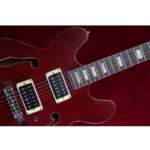Welcome to the next chapter of your guitar journey—a place where single notes and flowing melodies meet to create something truly magical. In this chapter, we’re diving into the art of how to play arpeggios. Think of arpeggios as chords unraveled, one note at a time. They’re the secret ingredient that makes solos soar, rhythm parts sparkle, and your playing sound infinitely more expressive.
If you’ve ever admired a beautifully cascading guitar passage and wondered how to replicate it, you’re in the right place. This guide will break down arpeggios into bite-sized pieces, giving you the confidence to add them to your own playing.
What Are Arpeggios?
Arpeggios are essentially chords played one note at a time instead of strumming them all at once. If you take a G major chord, for example, its arpeggio consists of the individual notes G, B, and D, played in sequence.
Here’s the magical part: arpeggios don’t just sound beautiful—they’re versatile. Use them to create melodic solos, add texture to chord progressions, or emphasize specific notes within a harmony.

Download The FretDeck & Pentatonic Secrets Course!
Download Our Course
Why Learn Arpeggios?
Learning how to play arpeggios unlocks creative possibilities in your playing. They help you:
- Create melodic solos: Arpeggios give solos a sense of structure and connection to the underlying chords.
- Improve fretboard knowledge: Practicing arpeggios helps you visualize chord shapes and note positions across the neck.
- Add depth to rhythm playing: A well-placed arpeggio can transform a simple progression into something intricate and compelling.
Step 1: The Building Blocks of Arpeggios
To start, let’s focus on the major triad—an arpeggio built from the three notes of a major chord:
- Root: The starting note of the chord (e.g., G in a G major chord).
- 3rd: The note that defines the chord’s quality as major or minor (e.g., B in G major).
- 5th: The note that adds fullness and stability (e.g., D in G major).
Here’s a simple G major arpeggio shape:
E|-----------------3--7--|
B|-------------3---------|
G|----------4------------|
D|-------5---------------|
A|----5------------------|
E|--3--------------------|
Play this slowly, one note at a time, and let each note ring out. This will help you build the muscle memory to connect the shape with its sound.
Step 2: Picking Technique for Arpeggios
To bring arpeggios to life, your picking hand plays a crucial role. Here are a few tips:
- Use Alternate Picking: Pick down, then up, alternating with each string. This keeps your motion fluid.
- Try Economy Picking: If two notes are on adjacent strings, use a single pick stroke to connect them.
- Keep It Clean: Focus on clarity. Each note should ring out without being cut short or bleeding into the next.
Step 3: Practice Simple Arpeggios
Start with these beginner-friendly shapes:
C Major Arpeggio (Open Position)
E|------------------0--|
B|-------------1-------|
G|----------0----------|
D|-------2-------------|
A|----3----------------|
E|---------------------|
This arpeggio combines open strings with fretted notes, making it ideal for beginners.
A Minor Arpeggio (5th Fret)
E|------------------5--8--|
B|-------------5----------|
G|----------5-------------|
D|-------7----------------|
A|----7-------------------|
E|--5---------------------|
Notice how the shape mimics the A minor barre chord. Visualizing the chord while playing the arpeggio helps reinforce both concepts.
Step 4: Use Arpeggios in Your Playing
Arpeggios shine when applied musically. Here are a few ideas:
1. Add Arpeggios to Chord Progressions
Instead of strumming through a G-C-D progression, try arpeggiating each chord. Play the individual notes of G, then C, then D, creating a flowing, melodic rhythm.
2. Arpeggios in Solos
Say you’re soloing over a C major chord. Instead of sticking to the scale, play a C major arpeggio to emphasize the harmony. Then transition to a G major arpeggio when the chord changes.
3. Create Fingerpicking Patterns
Arpeggios are a staple of fingerpicking. Play a descending arpeggio pattern with your thumb, index, and middle fingers for a classical-inspired sound.
Arpeggio Practice Tips
- Start Slow: Focus on accuracy and timing before increasing speed.
- Use a Metronome: Practice at a steady tempo to develop consistency.
- Explore Inversions: Play arpeggios starting from different notes (e.g., the 3rd or 5th) to expand your understanding.
- Combine with Scales: Alternate between scale runs and arpeggios to create dynamic solos.
Your Next Steps
Now that you know how to play arpeggios, it’s time to make them your own. Start small, experiment with simple patterns, and incorporate them into your solos and chord progressions.
Need more guidance? Check out the Modes for Guitar Demystified article on Guitar Freaks Blog to see how arpeggios fit into modal playing.
Want to share your progress or ask for tips? Join our Guitar Freaks Hangout on Discord and connect with a community of players eager to learn and grow together.

Join Guitar Freaks Hangout on Discord! 🎸
Connect with guitarists through YouTube watch parties, mini lessons, practice prompts, and a supportive community.
🔗 Join now!
Arpeggios are your key to unlocking a more melodic and expressive side of the guitar. Pick up your instrument, take it one note at a time, and let the music flow! 🎸

Download The FretDeck & Pentatonic Secrets Course!
Download Our Course










